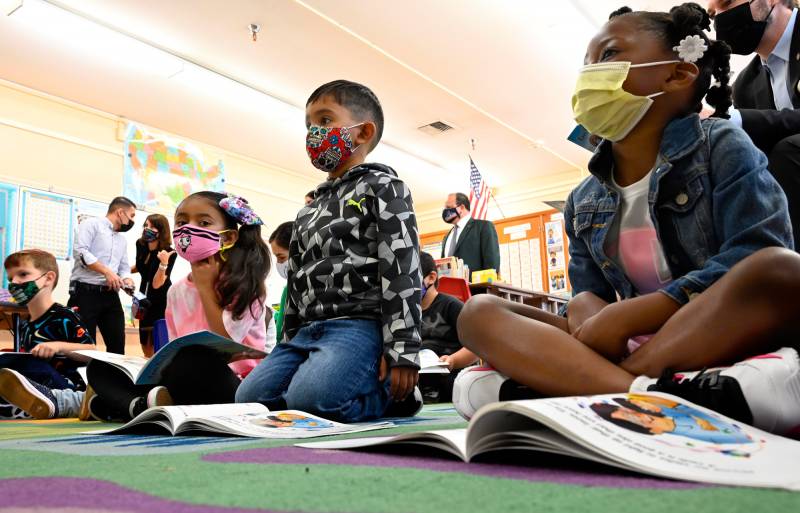"I would advise using the most comfortable mask, but at least ensure that it's a double-layer cotton mask," she says — and don't use one with an exhaust valve. (A three-layer mask is a great option if you can find it.) Multiple studies have shown that tightly woven cotton fabrics do a surprisingly good job of filtering out particles, and their performance can actually improve under humid conditions, such as those created when you breathe.
Most importantly, pick a mask that fits closely over the nose and mouth and down to the chin — bonus if it has adjustable ear loops and/or an adjustable nose piece. Remember: A snug fit is key to having a protective mask, so make sure your kid's mask doesn't gape open along the edges.
2. Pack a spare for school
Kids tend to be messy, so it's a good idea to throw an extra mask in their backpacks in case the one they're wearing gets soiled or sweaty, says Tina Tan, a pediatric infectious disease physician at Lurie Children's Hospital in Chicago. She says that's one reason parents might want to choose cloth masks over disposable ones for their kids.
"If the mask gets a little bit wet and it's very uncomfortable, they could go through two or three [masks] a day, so it could get more costly," she says. "Whereas with the cloth mask, if you buy a couple of them, you could wash them in between."
3. Skip the neck gaiters
Many kids like to wear gaiters because they're easy to pull up and down and they don't have any ear loops to fuss with. But while any mask is better than no mask, "I would really put [gaiters] way at the bottom of the list," says Yvonne Maldonado, a pediatrics and infectious disease specialist at Stanford University who also serves as chair of the Committee on Infectious Diseases for the American Academy of Pediatrics.
"They might look kind of cute for some people, but they really aren't doing too much because they stretch so much and the fabric is really porous," she says. "Everything can just come right through."
4. Consider adding a filter or double-masking
If your child can wear it comfortably, now would be the time to add a filter to the mask, says Linsey Marr, a researcher at Virginia Tech who studies how viruses transmit in the air. She's also the mother of two children, one of whom is still too young to be vaccinated. "Right now I'm emphasizing [to them], 'You have to have the filter in there. We need our best mask game right now," Marr says.
Many masks are sold with a filter layer built in. If your cloth mask has a pocket for a filter, Marr suggests inserting a good-quality surgical mask, because they're made of material that's very efficient at filtering out particles. Cut the surgical mask to fit inside the pocket if need be. She says HEPA filters cut out from the filters used in portable air cleaners also work well (here's her how-to video).
Double-masking is also an option, she says. Your child would wear a surgical mask closest to their face, with a snug-fitting cloth mask on top to eliminate any gaps. The goal is to "achieve good filtration and fit, which are both key to having a protective mask," Marr says.
However, not everyone agrees that double-masking is necessary. So if your kid finds this uncomfortable, skip it.
5. What to make of KN95s for kids?
While child-size KN95 respirators do exist now, they're not necessary, says Tan — and like double masking, they can be uncomfortable to wear for long periods of time.
Maldonado agrees that a KN95 isn't needed, but she also understands that some people's risk tolerance is a lot lower than others'. "If people feel more comfortable with a KN95 and their child can wear it, I don't have a problem with it."
Another important consideration with KN95s is fit. For these types of respirators to work as effectively as billed (blocking out at least 95% of small airborne particles), they have to fit really well. A poor-fitting KN95 might not be all that protective for your child and could give a false sense of security.
6. Practice good masking techniques at home
Kids are proving capable of learning to wear their masks correctly, which is key to their effectiveness. "I've been rather impressed by how well kids are able to keep on their mask. We've seen good compliance," says Kalu, who was part of the research team that found masks worked to curb transmissions in North Carolina schools.



9(MDAxOTAwOTE4MDEyMTkxMDAzNjczZDljZA004))